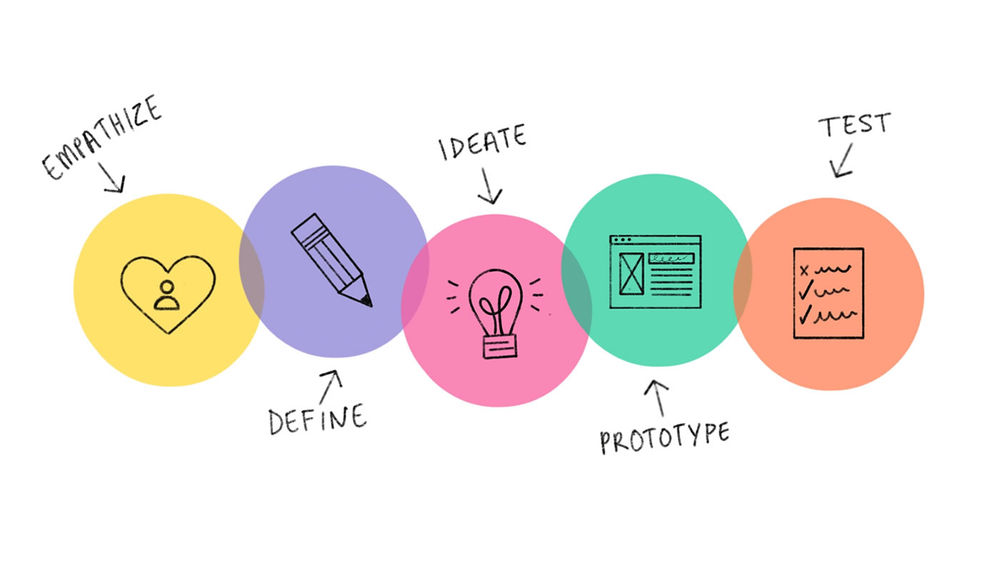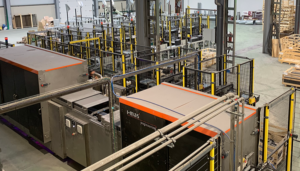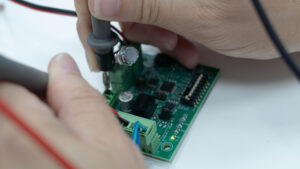In product design, the Design Thinking approach has become an essential methodology for driving innovation and success.
In this article, we will explore what Design Thinking is and how we can effectively apply it in our product design company to achieve exceptional results.
¿Qué es el Design Thinking?
Design Thinking is a human-centered approach to problem-solving and creative idea generation. It focuses on deeply understanding the needs and desires of end users, while embracing experimentation, multidisciplinary collaboration, and rapid iteration.
Unlike traditional methods that may be more focused on optimizing existing solutions, Design Thinking seeks new perspectives and innovative solutions through a structured yet highly adaptable process.
Los pilares del Design Thinking
Design Thinking is based on a series of key principles that guide the creative process:
- Empathy: It is crucial that the product design team thoroughly understands the users, including their needs, desires, and challenges. This involves conducting in-depth research, such as interviews, observations, and data analysis, to gain a comprehensive understanding of the user.
- Problem Definition: It is crucial to establish a precise problem definition to effectively guide the creative process.
- Ideation: Generating creative and innovative ideas by exploring different approaches and perspectives. Ideation sessions may involve techniques such as brainstorming and mind mapping to stimulate creativity and generate a wide range of possible solutions.
- Prototyping: Building quick and inexpensive prototypes to materialize ideas and enable early testing with real users. These prototypes can be simple representations of concepts that help visualize and communicate ideas in a tangible way.
- Testing: Testing may involve user sessions, usability testing, and concept evaluations to identify areas for improvement and ensure that final solutions are effective and satisfactory for users.

Beneficios del Design Thinking en el Diseño de Producto
By adopting Design Thinking, our company can experience a series of benefits:
- Innovation: Generation of unique and disruptive solutions.
- Increased Customer Satisfaction: Products designed with real user needs in mind.
- Development Efficiency: Reduction of errors and rework by continuously validating solutions with users.
- Collaborative Culture: Fostering a collaborative and creative work environment.
Impacto del Design Thinking en la experiencia del usuario
Design Thinking has a very significant impact on the user experience by focusing on deeply understanding the needs and desires of people.
This empathetic and collaborative approach leads to products and services that are more intuitive, appealing, and effective in meeting user expectations. The iterative process and continuous feedback ensure solutions that evolve with market demands and foster brand loyalty.
Design Thinking en i-mas
At i-mas, we greatly recognize the value of Design Thinking in product design. This human-centered approach not only drives innovation but also significantly enhances the user experience. By adopting principles such as empathy, ideation, and prototyping, our company can create solutions that truly address the needs and expectations of all our customers.
Design Thinking allows us to generate unique and disruptive ideas, design products that drive greater satisfaction among users, and foster a culture of collaboration within our team, promoting an environment where creativity and innovation continuously thrive.
By applying this methodology, we are not only designing exceptional products, but we are also establishing stronger relationships with our customers by providing unique and personalized experiences.
Are you looking for a product design company in Barcelona? Contact us and tell us about your project!



